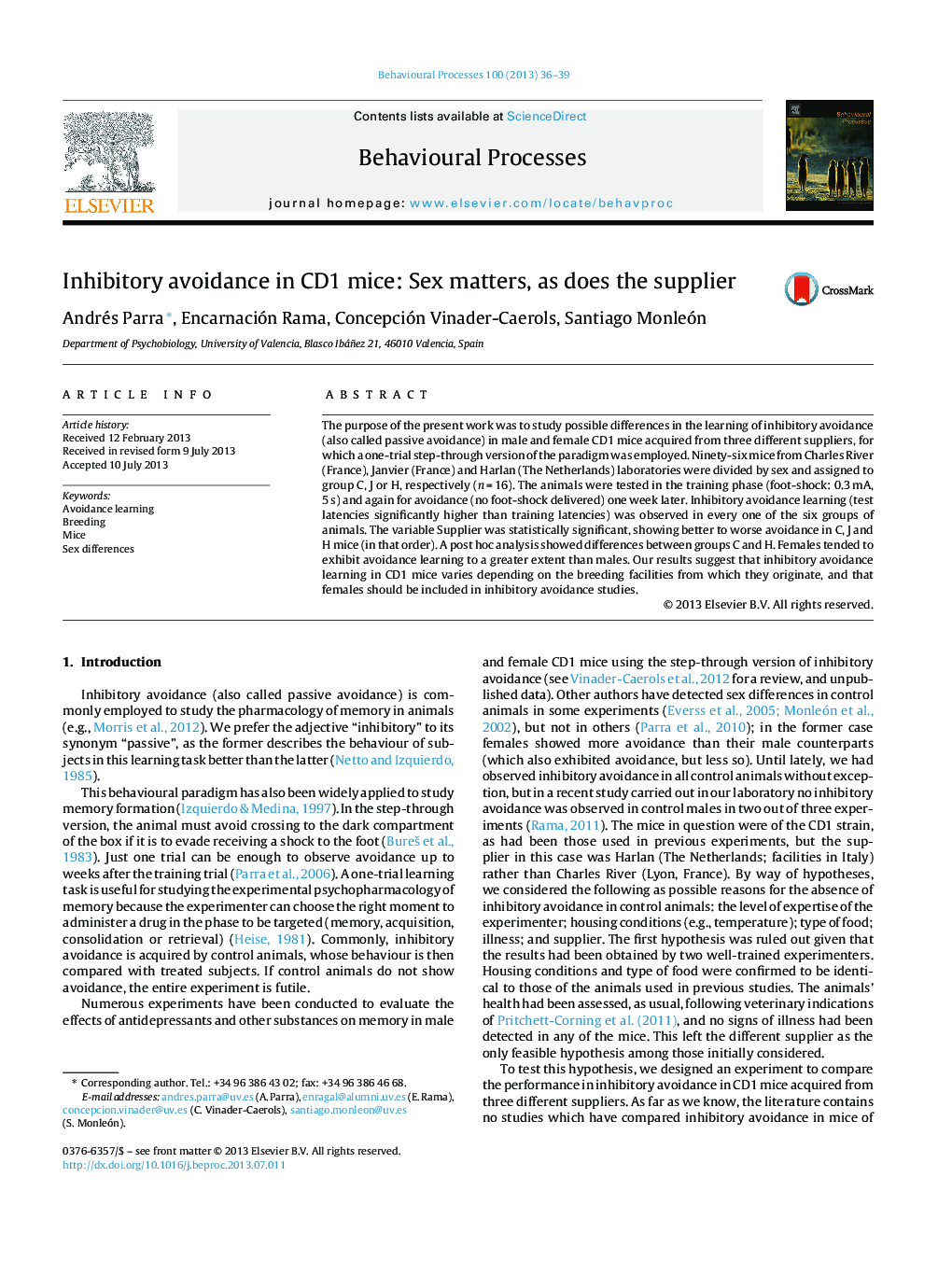| Article ID | Journal | Published Year | Pages | File Type |
|---|---|---|---|---|
| 8497403 | Behavioural Processes | 2013 | 4 Pages |
Abstract
The purpose of the present work was to study possible differences in the learning of inhibitory avoidance (also called passive avoidance) in male and female CD1 mice acquired from three different suppliers, for which a one-trial step-through version of the paradigm was employed. Ninety-six mice from Charles River (France), Janvier (France) and Harlan (The Netherlands) laboratories were divided by sex and assigned to group C, J or H, respectively (n = 16). The animals were tested in the training phase (foot-shock: 0.3 mA, 5 s) and again for avoidance (no foot-shock delivered) one week later. Inhibitory avoidance learning (test latencies significantly higher than training latencies) was observed in every one of the six groups of animals. The variable Supplier was statistically significant, showing better to worse avoidance in C, J and H mice (in that order). A post hoc analysis showed differences between groups C and H. Females tended to exhibit avoidance learning to a greater extent than males. Our results suggest that inhibitory avoidance learning in CD1 mice varies depending on the breeding facilities from which they originate, and that females should be included in inhibitory avoidance studies.
Related Topics
Life Sciences
Agricultural and Biological Sciences
Animal Science and Zoology
Authors
Andrés Parra, Encarnación Rama, Concepción Vinader-Caerols, Santiago Monleón,
